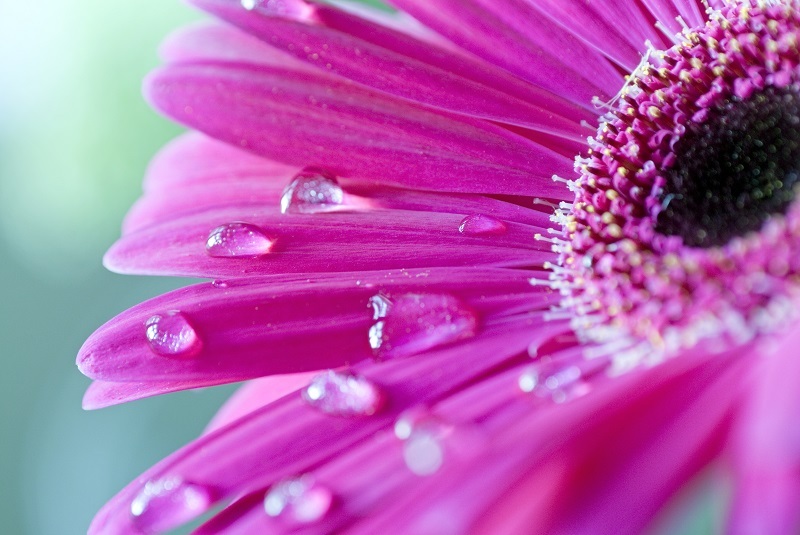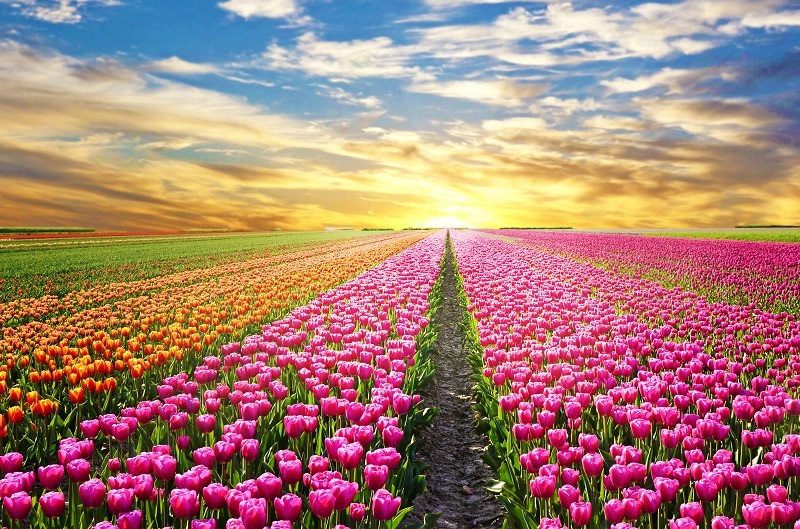Explore Your Birth Flower and Discover Its Hidden Meanings
Posted on 03/07/2025
Explore Your Birth Flower and Discover Its Hidden Meanings
Have you ever wondered what birth flower corresponds to your birthday and what secrets it may hold? Much like birthstones, birth flowers offer a unique, personalized way to connect with the natural world and deepen your self-understanding. Join us as we explore the fascinating tradition of birth month flowers, dissecting their origins, symbolism, and how they can enrich your life today. Whether you're searching for a deeper connection to your birth month, a unique gift, or fresh inspiration for your garden, learning about birth flowers is sure to delight and inform you.

The Origins and History of Birth Flowers
The tradition of assigning a flower to each birth month is rooted in ancient history and folklore. Flower symbolism has existed for centuries, with different cultures attributing special meanings and stories to various blooms. The Victorians especially popularized the language of flowers (also known as floriography), using bouquets to express subtleties of emotion and secret messages.
Over time, certain flowers became associated with specific months, much like birthstones. Choosing the right birth month flower has long been a way to convey good wishes, protection, or positive traits. These traditional associations still resonate today, making them a charming addition to everything from greeting cards to wedding bouquets.
Birth Flowers by Month: Meanings and Symbolism
Every month boasts its own birth flower or sometimes two. Let's take a closer look, month by month, at these blooms and discover what messages they carry:
January - Carnation & Snowdrop
- Carnation: Symbolizes love, fascination, and distinction. Carnations are especially valued for their ruffled beauty and rich diversity of colors, each carrying a distinct meaning.
- Snowdrop: Represents hope and the promise of new beginnings. Emerging in the coldest part of the year, snowdrops symbolize resilience and the return of light after darkness.
February - Violet & Primrose
- Violet: Known for modesty, faithfulness, and spiritual wisdom. This humble yet captivating wildflower has been a favorite since ancient Greece.
- Primrose: Stands for young love and affection.
March - Daffodil
- Daffodil: An emblem of rebirth, new beginnings, and unwavering hope. The first sign of spring in many gardens, daffodils herald positivity and joy.
April - Daisy & Sweet Pea
- Daisy: Represents innocence and purity. The daisy's simple charm makes it an enduring symbol of youthful joy.
- Sweet Pea: Conveys blissful pleasure and good-bye, making it both a celebration of happy times and an elegant farewell.
May - Lily of the Valley & Hawthorn
- Lily of the Valley: Associated with humility, sweetness, and a return to happiness. Its delicate, fragrant blooms have inspired poets for centuries.
- Hawthorn: Represents hope and happiness.
June - Rose & Honeysuckle
- Rose: Universally recognized as the flower of love and passion. Yet, each color of rose brings its own nuance: red for love, yellow for friendship, pink for gratitude, and more.
- Honeysuckle: Symbolizes devotion and affectionate bonds.
July - Larkspur & Water Lily
- Larkspur: Denotes positivity and an open heart, often tied to lighter emotions and a sense of carefree youth.
- Water Lily: Represents purity and majesty.
August - Gladiolus & Poppy
- Gladiolus: Symbolizes strength of character, integrity, and sincerity. Its tall, stately spikes evoke confidence and presence.
- Poppy: Evokes imagination and remembrance.
September - Aster & Morning Glory
- Aster: Represents love, wisdom, and faith. Its starry shape and wide color palette make it an autumn favorite.
- Morning Glory: Stands for affection and the fleeting nature of life's joys.
October - Marigold & Cosmos
- Marigold: Radiates warmth and creativity. In some cultures, marigolds symbolize a connection with the spirit world and are used in celebrations like Dia de los Muertos.
- Cosmos: Represents order and serenity.
November - Chrysanthemum
- Chrysanthemum: Signifies joy, optimism, and a life well-lived. This flower is especially revered in East Asian cultures as a symbol of perfection and long life.
December - Narcissus & Holly
- Narcissus: Emblematic of self-esteem and good wishes, as well as new hope.
- Holly: Represents protection and domestic happiness.
The Deeper Symbolism Behind Birth Flowers
Each birth month flower imparts a message--about your character, your values, and your unique approach to life. For centuries, people have looked to their birth flower meanings for guidance or inspiration. Some believe that keeping your birth flower close, whether as a bouquet, jewelry motif, or even a tattoo, can promote those qualities within you.
Did you know? The color of your birth flower can deepen or shift its meaning. For example, a red carnation (January) connotes deep love and admiration, while a white one suggests purity and luck.
Ways to Connect with Your Birth Flower
- Grow It: Add your birth flower to your garden or indoor planter for personal resonance.
- Wear It: Incorporate your flower into jewelry, fashion, or even as a temporary tattoo.
- Art & Decor: Display prints or paintings of your birth month flower as a daily reminder of its message.
- Celebrations: Use your birth flower in birthday bouquets, parties, or even as cake decorations for meaningful flair.
- Gifts: Select personalized presents based on birth flowers for family and friends.
Birth Flowers and Astrological Connections
Did you know your zodiac sign can also influence your choice of birth flower? Many people enjoy combining the symbolism of birth month flowers with astrological traits for a more nuanced personal profile. For instance, fiery Aries may feel particularly drawn to the bold daffodil, while Cancer's nurturing spirit aligns beautifully with the comforting water lily.
Pro Tip: Experiment with combining your birth flower with those aligning to your loved ones' signs for a bouquet full of meaning and intention!
Global Variations: Different Flowers for Different Cultures
While the list above reflects common Western traditions, birth flower assignments can vary around the world based on local flora and cultural preferences. In some countries, like Japan, flower symbolism is deeply woven into the calendar and social etiquette; certain flowers are exchanged for birthdays or anniversaries, each carrying a weighty message.
For example, in the Hanakotoba system of Japan, cherry blossom (sakura) is revered for April, representing the fleeting beauty of life. In the UK, the tradition sometimes includes additional or different flowers--such as the foxglove for June.
How to Find Your Personal Birth Flower
- Locate Your Birth Month: Check the comprehensive list above to determine your designated birth month flower.
- Research Its Meaning: Explore the unique symbolism associated with your flower; consider both the general and color-specific meanings.
- Find Local Variations: Look into your regional floral traditions, especially if you have ties to different cultures, for an even deeper connection.
Tip: If you don't resonate with your traditional birth flower, find the one that speaks to you most. The beauty of floriography is its flexibility!
Birth Flowers as Gifts: Personal and Thoughtful
Selecting a bouquet or present based on someone's birth flower is an easy way to show thoughtfulness and care. Here's why birth flower gifts stand out:
- Personalization: Few things say "I know you" quite like a custom birth flower arrangement.
- Thoughtful Symbolism: Each flower carries a wish or hope tailored to the recipient's journey.
- Timelessness: This is a tradition that transcends trends and fads--always special, always meaningful.
Fun Facts About Birth Flowers
- The daffodil is so cherished in Wales (March's birth flower) that it's linked to the national holiday of St. David's Day.
- Chrysanthemums (November) are considered symbols of death in some European countries, but of cheer and long life in Japan!
- Lily of the valley (May) was a favorite flower of Christian Dior and inspired his first fragrance.
- Roses (June) have more than 150 species and tens of thousands of cultivars, offering a symbolism that's as varied as its hues.

Incorporate Birth Flowers into Everyday Life
Home Decor
- Frame botanical prints or watercolors of your birth flower for a personalized touch.
- Use floral motifs on throw pillows, curtains, or mugs.
Mindfulness & Affirmation
- Meditate on your flower's meaning as a daily affirmation (e.g., "I embrace new beginnings" for March's daffodil).
- Create a vision board that includes your birth flower among images of your goals and hopes.
Connection Traditions
- Start a new tradition: Plant your or your child's birth flower on each birthday to celebrate growth and connection.
- Journal about how you relate to the flower's symbolic message each year.
Key Takeaways: Unlocking the Magic of Birth Flowers
- Birth month flowers carry ancient meaning, connecting you to nature and personal symbolism.
- The meanings of birth flowers add depth to personal identity and make wonderful personalized gifts.
- You can incorporate birth flower meanings into daily life through decor, celebrations, and mindfulness practices.
- Exploring your birth flower is a unique way to discover more about yourself and the people you cherish.
Are you ready to explore your birth flower and discover its hidden meanings? Whether you cherish tradition, love symbolism, or just want to add a new layer of beauty to your home and relationships, learning about birth month flowers is a delightful journey. Next time you see your flower in bloom, you'll know its story--and maybe a bit more about your own.
Latest Posts
Poinsettia Care Tips for Prolonged Beauty
Discover which blossom aligns with your unique personality
Top Floral Choices for Birthday Celebrations







